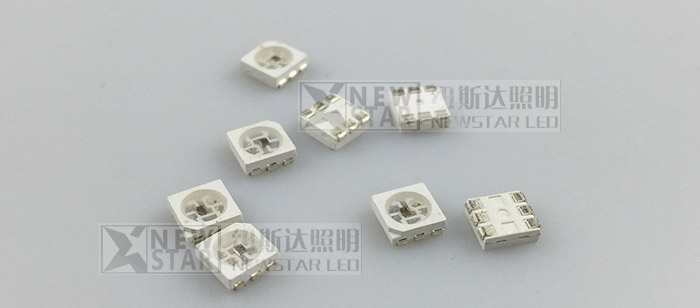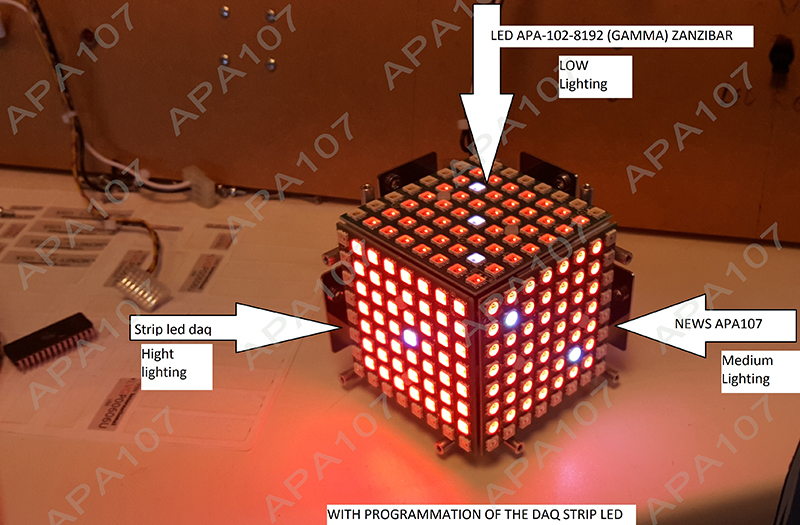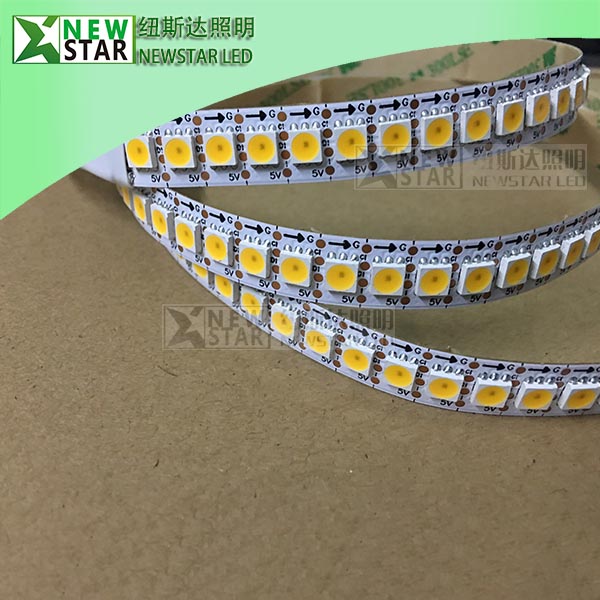Below is normal RGB+W LED strip, you can see the RGB and White color chip is different LED, the brightness is lower than RGB LED strip or single white color LED strip, I means same LEDs quantity.
For example, 60leds RGB led strip or 60leds White led strip, it is more brightness than this kind 60leds RGBW led strip, so it only has 30leds RGB and 30leds White LED SMD, and we can only get RGB+3000K warm white, RGB+4000K natural white or RGB+6000K pure white. but it is the cheapest RGBW led strip option.
With technology developing, the chip manufacturer can add white to RGB LED SMD, so we get four in one RGBW LED strip, as below:
It is four in one LED RGBW led strip, RGB and white color in one LED, but it is same with above kind that we can only get RGB+3000K warm white, RGB+4000K natural white or RGB+6000K pure white. However it is better than normal RGB+W led strip, higher watt, more brightness, with more uniform lighting. I think everyone like one type led strip light can have RGB color, also can change the color temperature from 3000K to 6000K.

Nowdays, Newstar LED company has came out one newest led strip light-five color in one 5 in 1 LED RGBCCT led strip light, it means that we can get all color from this strip light, such as R/G/B RGB and 3000k to 6000k all white color, and the 5 in 1 RGBCCT LED Strip Light as below:
Actually in our market also have the following model RGB+CCT led strip light, RGB and White LED SMD is not same, as below:
Firstly we need the below type controller with 6 channels,
Product Parameters
|||||||||||||||||||||||||||||||||||||||||||||||||||||||||||||||||||||||||||||||||||||||||||||||||||||||
Product Name: 2.4GHz 5 in 1 RGBCCT Strip Controller
Voltage: DC12V-24V
Output: Max. 6A/Channel, Total output Max.10A
Control Distance: 30m
Size: 85*45*22.5mm
Product Name: 2.4GHz 5 in 1 RGBCCT Strip Controller
Voltage: DC12V-24V
Output: Max. 6A/Channel, Total output Max.10A
Control Distance: 30m
Size: 85*45*22.5mm
Connection,
If you want to know more details about our 5 in 1 RGBCCT led strip light, we think you can buy one roll sample to test, so that you can know it clearly.
welcome to contact us, email info@newstarleds.com.
NEWSTAR LED CO., LIMITED.
www.newstar-ledstrip.com
www.newstar-ledstrip.com































